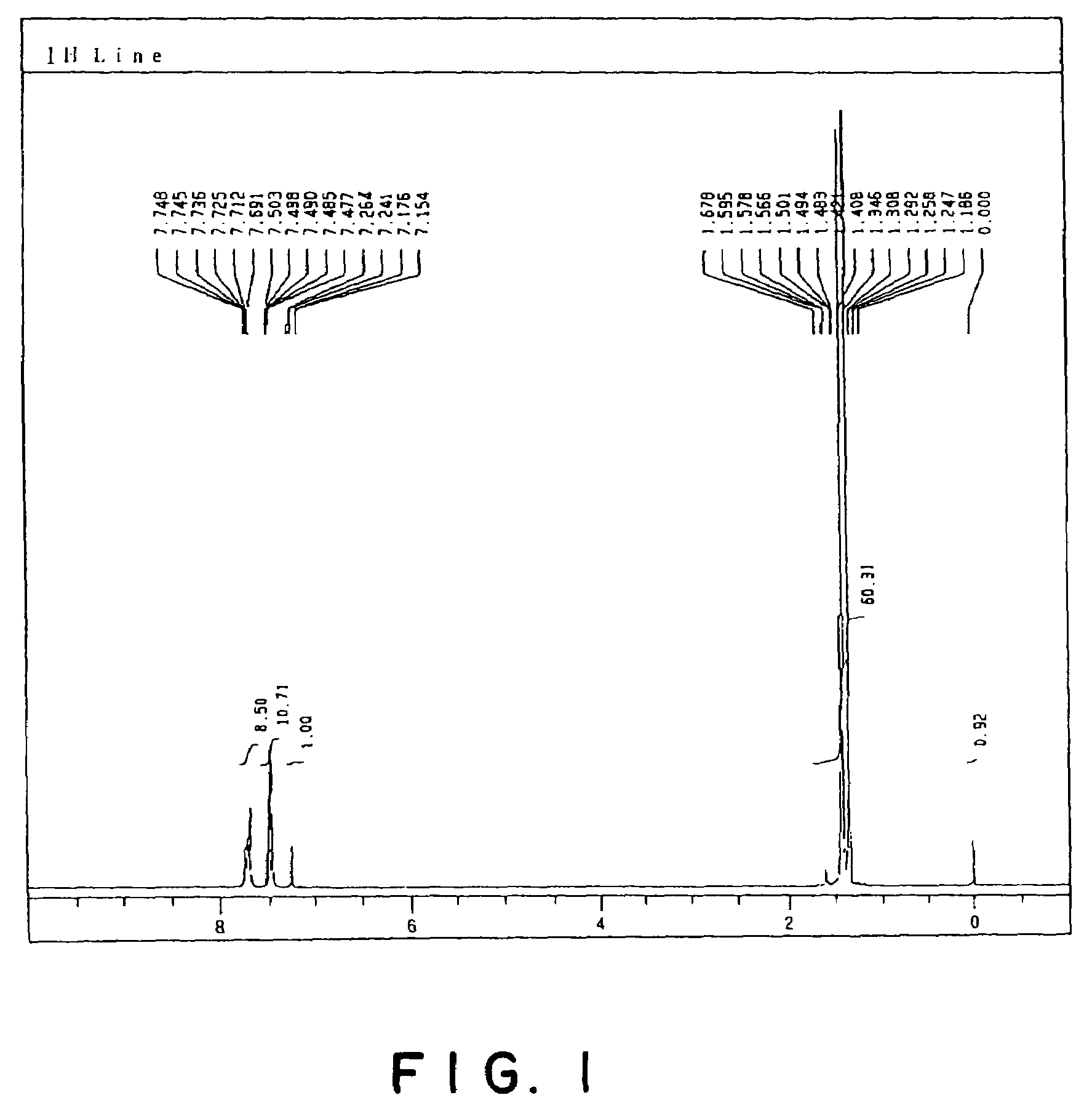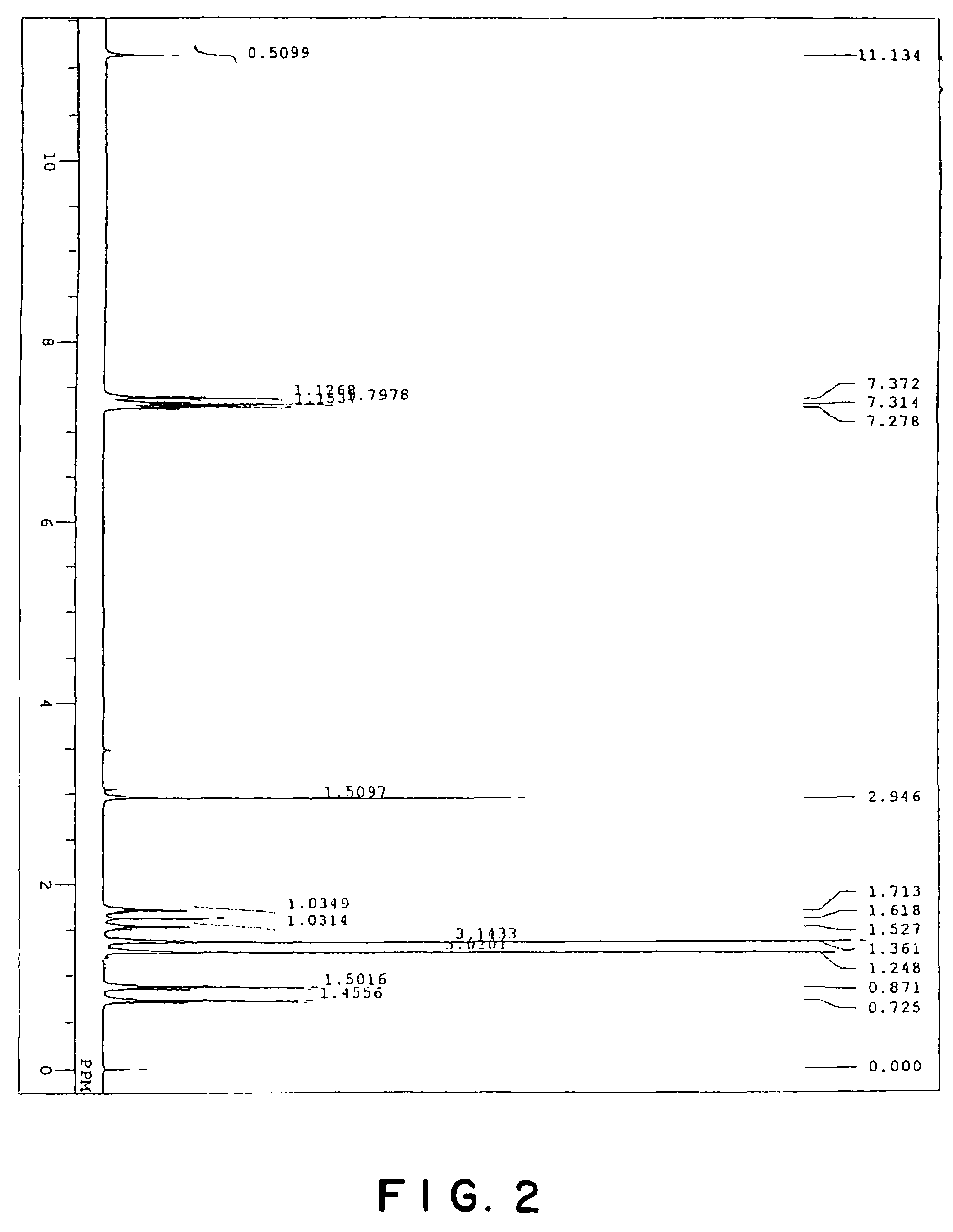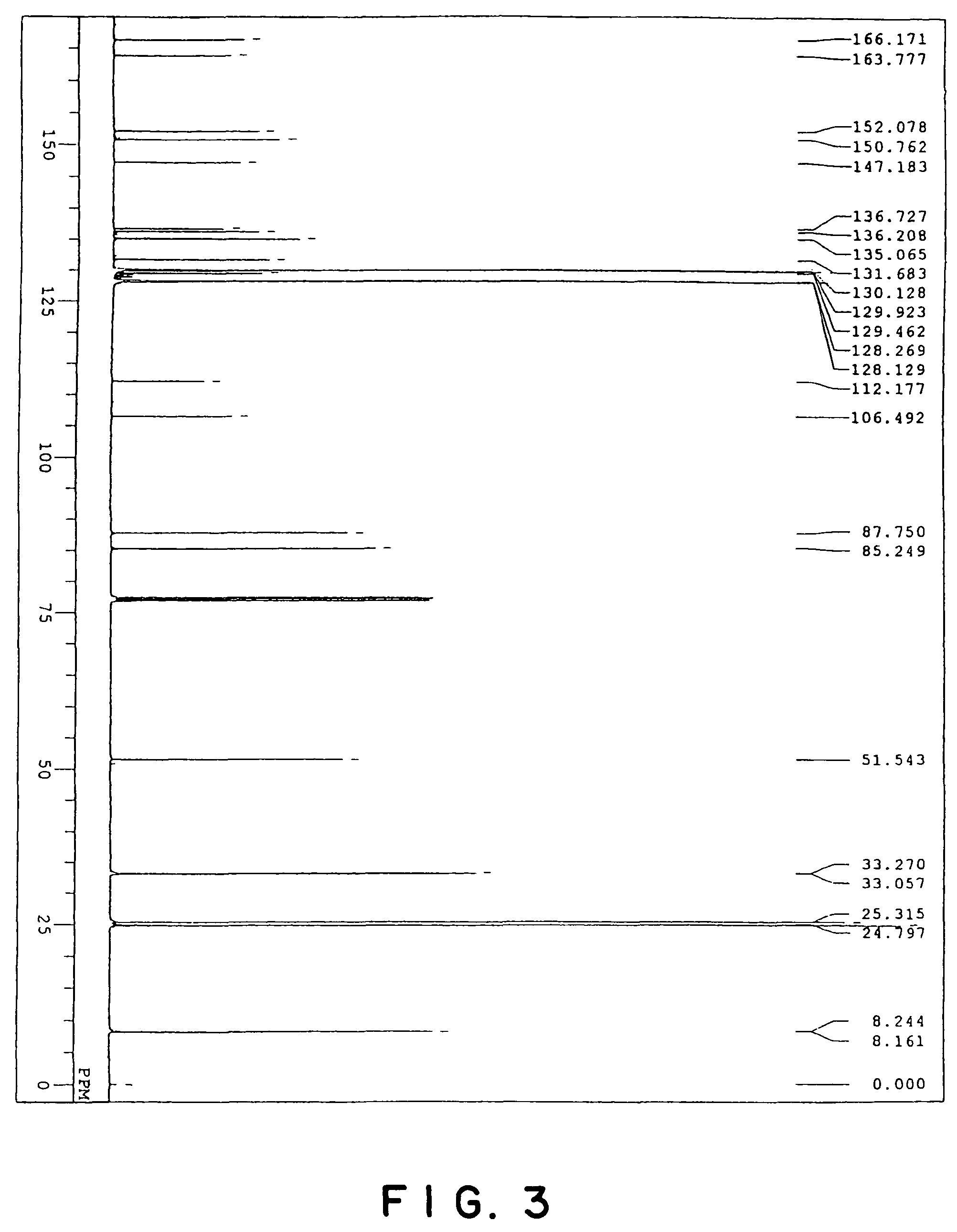Coloring material and color filter
a color filter and pigment technology, applied in the field of color filter materials and color filters, can solve the problems of pigments that have problems such as uneven reduction of layer thickness, lack of dispersion, dispersion stability, etc., and achieve excellent coating smoothness, high pigment content, and enhanced affinity of compounds per se
- Summary
- Abstract
- Description
- Claims
- Application Information
AI Technical Summary
Benefits of technology
Problems solved by technology
Method used
Image
Examples
examples
[0140]The present invention will be described in more detail with reference to the following examples. In the following examples, all “parts” are by weight, and all “%” are by weight.
example a1
(1) Preparation of Solution
[0141]4 parts of N,N′-bis-tert-amyloxycarbonyl-1,4-diketo-3,6-di(4′-chlorophenyl)pyrrolo-[3,4-c]pyrrole (DPP) was dissolved in 76 parts of methoxypropyl acetate (PGMEA) which had been dried over Molecular Sieves 4A. The solution was filtered through a 0.1-μm filter. To this solution was added a solution of 1.36 parts of Disperbyk-164 (manufactured by Bik-Chemie Japan K. K., solid content 60%, amine value 18 mg KOH / g) in 1.64 parts of PGMEA. The mixture was stirred at room temperature to prepare a transparent orange solution.
(2) Preparation of Concentrated Solution
[0142]0.32 part of a 10% hydrochloric acid-methanol solution dissolved in a minor amount of PGMEA was added dropwise to and mixed with the solution prepared in (1) over a period of one hr at a temperature of 40° C. The mixture was stirred for additional one hr. The resultant solution was a transparent fluorescent yellow solution. This solution was concentrated at a temperature of 40° C. in vacuo t...
example b1
(1) Preparation of Suspension
[0157]0.98 part of N,N′-bis-tert-amyloxycarbonyl-1,4-diketo-3,6-di(4′-chlorophenyl)pyrrolo[3,4-c]pyrrole (DPP) was added to 100 parts of methanol which had been dried over Molecular Sieves 4A. To this suspension was added 0.12 part of 4-dimethylaminopyridine. The mixture was stirred at room temperature to prepare a yellow suspension.
(2) Preparation of Dissolved Colored Solution
[0158]The suspension prepared in (1) was stirred at a temperature of 60° C. for 2 hr. Thus, a clear solution was prepared. Since a very small amount of a red solid came to precipitate, the red solid was removed through a filter. The filtrate thus obtained was an orange clear solution.
(3) Isolation of Solidified Coloring Material (Ring Opened Latent Pigment)
[0159]The solution prepared in (2) was concentrated in vacuo at a temperature of 40° C. until the total amount of the solution became 30 parts. The concentrated solution was cooled in ice to precipitate a yellow solid. The precip...
PUM
| Property | Measurement | Unit |
|---|---|---|
| temperature | aaaaa | aaaaa |
| temperature | aaaaa | aaaaa |
| particle diameter | aaaaa | aaaaa |
Abstract
Description
Claims
Application Information
 Login to View More
Login to View More - R&D
- Intellectual Property
- Life Sciences
- Materials
- Tech Scout
- Unparalleled Data Quality
- Higher Quality Content
- 60% Fewer Hallucinations
Browse by: Latest US Patents, China's latest patents, Technical Efficacy Thesaurus, Application Domain, Technology Topic, Popular Technical Reports.
© 2025 PatSnap. All rights reserved.Legal|Privacy policy|Modern Slavery Act Transparency Statement|Sitemap|About US| Contact US: help@patsnap.com



